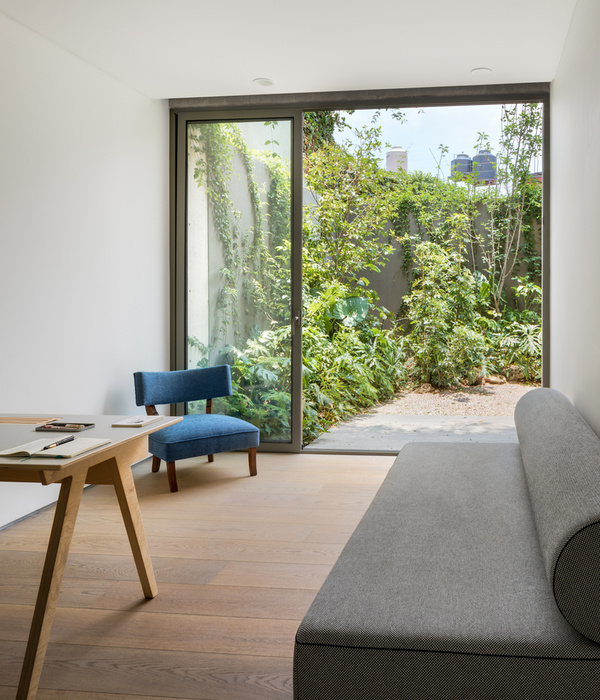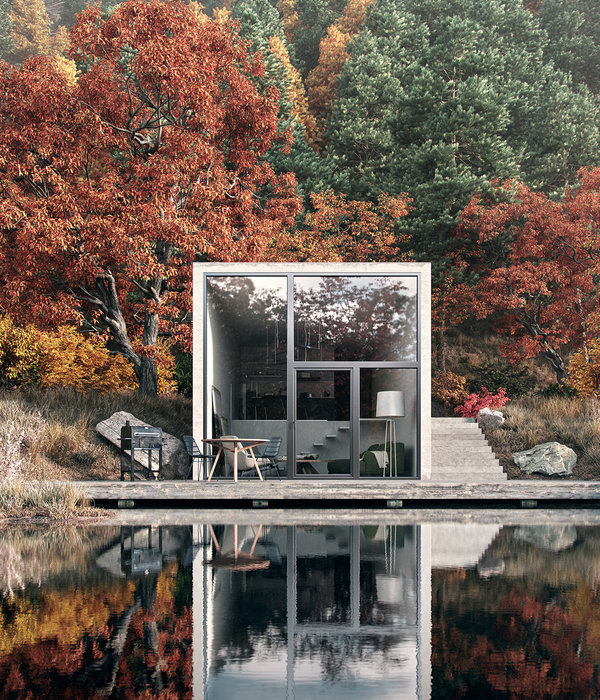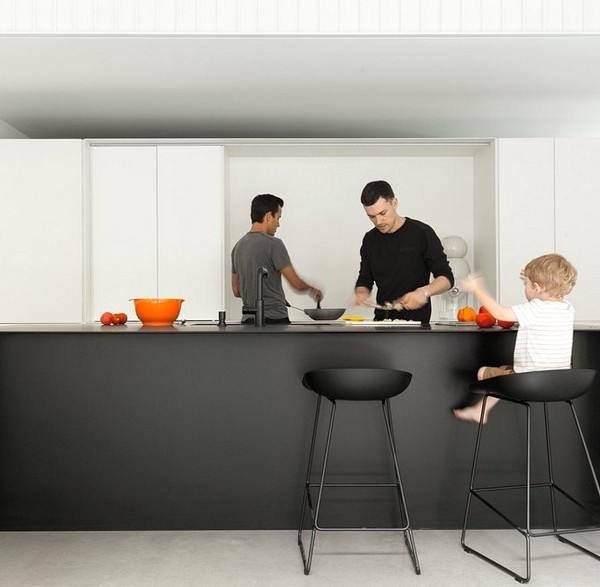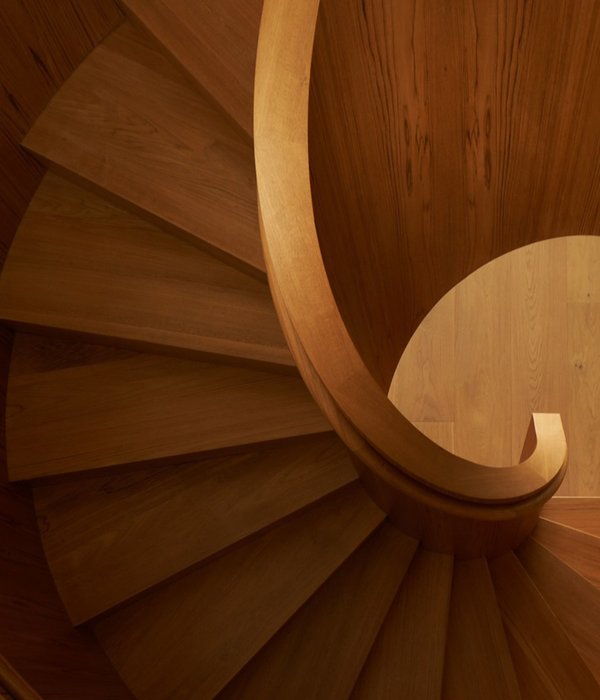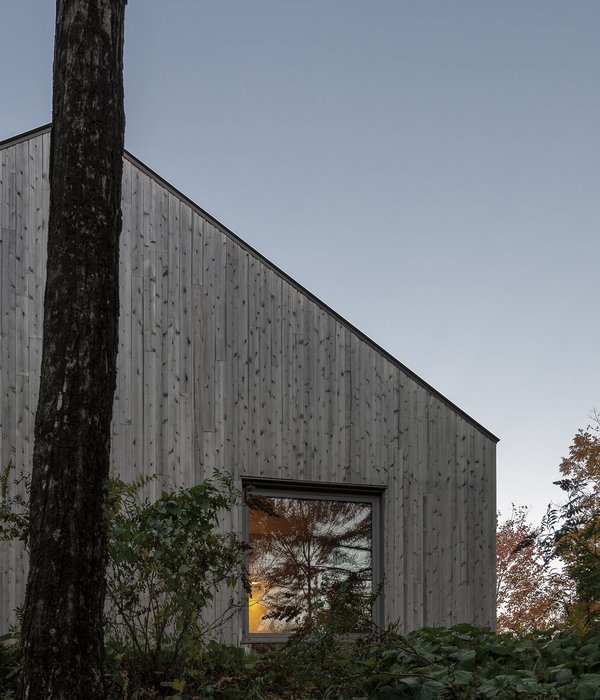“我喜欢漫步在工业废渣场和这片无人地带,这里的城市四分五裂,古老的砖砌烟囱点缀着田野和混凝土块之间的无政府斗争。”——Ricardo Bofill
“I liked to stroll through theindustrial waste sites and through this no-man’s land, where the city is tornapart, where old brick chimneys punctuate the anarchic struggle between thefields and blocks of concrete,” Ricardo Bofill remembers.
La Fábrica,西班牙语,意为TheFactory,工厂。这座位于西班牙巴塞罗那郊外的废弃水泥工厂后来成了建筑师Ricardo Bofill的家。Ricardo Bofill将现有的建筑改造成一个开创性的工作室,他的家庭生活空间就坐落在里面。然而,当Ricardo Bofill第一次看到它时,这家水泥工厂是加泰罗尼亚工业历史的一座废弃的纪念碑。建筑师的人生使命是对这个建筑进行复苏、重新定位和重新评估,这个建筑已经被废弃了,很多人可能已经忽视了。“我想住在那里,享受挑战带来的乐趣,”他说。La Fábrica显然不是注定要失败的。
La Fabrica, Spanish for The Factory. An abandoned cement factory outside Barcelona, Spain, became the homeof architect Ricardo Bofill. Ricardo Bofill has transformed the existing building into a groundbreaking studio in which his family living space sits.Yet when Ricardo Bofill first saw it, the cement factory was an abandoned monument to Catalonia's industrial past. The architect's mission in life is torevive, reposition and reevaluate a building that has been abandoned and perhaps neglected by many. "I want to live there and enjoy thechallenge," he said. La Fabrica is clearly not doomed.
Ricardo Bofill第一次见到这座31,000平方米的工厂是1973年他在加泰罗尼亚郊区的一次驱车旅行中。他一直在寻找一处房产,既可以为车间建造一间宽敞的办公室,也可以为自己和家人建造一幢宽敞的住宅。在当时,这是一个相对激进的主张:在他居住的巴塞罗那,一系列规定意味着不可能有一个工作兼生活的空间。然而,驱车前往该市郊区给他提供了一个巨大机会。向天空排放浓烟的是西班牙最古老的水泥厂之一,烟囱最高。后来,Ricardo Bofill买下了这处房产和周围的土地,希望把他的梦想变成现实。
Ricardo Bofill first encountered the 31,000-square-meter factory on a drive around the Catalan suburbs in 1973.He had been looking for a property that would allow him to construct both aspacious office for the workshop and an ample home for himself and his family.It was a relatively radical proposition at the time: in Barcelona, where he wasliving, a series of regulations meant a work-cum-living space was impossible. However, the drive to the western outskirts of the city provided what he saw tobe a monumental opportunity. Pumping smoke into the sky was one of the oldest cement factories in Spain, with the tallest chimney. Then, Bofill bought theproperty and all the land around it in a bid to bring his vision to life.
这里仍然充满了工人和灰尘,浓烟滚滚,工厂虽然不是一个幽灵,但它肯定是一个遗迹,因此吸引了一个对废墟持续着迷的建筑师。“从哲学上讲,我喜欢毁灭这个想法。生活就是毁灭,半成品深深吸引着我。”Ricardo Bofill说。“艺术品并不存在,这就像一场猎狗赛跑,你朝着某样事物奔跑,但却永远无法到达。所有的工作都有问题。”
Here, still full of workers anddust, the smoke billowing, the factory is not a ghost, but it is certainly arelic, thus attracting an architect who continues to be fascinated by theruins. "Philosophically, I like the idea of destruction. Life isdestruction, and semi-finished things fascinate me." Ricardo Bofill said."Art doesn't exist. It's like a hound race. You run towards something butyou never get there. All jobs have problems."
工厂在建筑形式上也代表了许多碰撞的世界,特别是在加泰罗尼亚的工业背景下。它建于20世纪20年代早期加泰罗尼亚工业化的第一个黄金时期,然后逐渐建成,根据生产需要增加新的结构和扩建。其庞大的、即兴的计划反映了加泰罗尼亚不断增长的工业化。每一次扩张都标志着另一轮三维形式的繁荣。在许多方面,它与乡土建筑有共同的特点,在乡土建筑中,房屋是根据需要有机地形成的,或者说是随着时间的推移,家庭规模的增加——但在工业领域中表现出来。
The factory also represented, inarchitectural form, many colliding worlds, especially in the context ofindustry in Catalonia. It had been constructed during Catalonia’s first goldenperiod of industrialisation in the early 1920s, then built gradually, with new structures and extensions added on when production demanded them. Itssprawling, improvisatory plan reflected Catalonia’s incrementalin dustrialisation—each extension signalled another bout of prosperity inthree-dimensional form. In many ways, it shared characteristics with vernaculararchitecture—in which homes are formed organically according to need or, say,an increase in family size over time—but as expressed in the industrial realm.
对RicardoBofill来说,为这一建筑经典做出贡献是一件非常有趣的事,因为他对城市主义的看法让人耳目一新。它迎合了他对保护和增加已建环境的渴望,就像城市在历史上形成一样,而不是简单地以更现代的模式拆除现有的结构。就像令他着迷的废墟一样,这是一种有点浪漫的景象。“在文艺复兴(Renaissance)和巴洛克(Baroque)时期,有人会在原有建筑上增建新的部分。我想重复这种经历,不仅仅是在普通的建筑上,而是在最复杂的水泥工厂上。”
Contributing to this strand ofthe architectural canon was of great interest to Bofill, with his refreshing take on urbanism. It appealed to his desire to conserve and add to the built environment, just as cities were formed throughout history, rather than simplytearing down existing structures in the more contemporary model. Like the ruinshe was fascinated by, it was a somewhat romantic vision. “In the Renaissance and Baroque periods, somebody would turn up and add a new bit to an existing building that remained in place. I wanted to repeat this experience, only notwith a normal building, but the most complicated one, a cement factory,” saysBofill.
La Fábrica是超现实主义的杰作,它是不同建筑的总和。这座建筑向人们闪现出各种各样的意象,让他们的视野充满了如何利用它的灵感:有通向任何地方的楼梯,还有各种各样的空间,虽然在视觉上强大,但在实际上毫无用处。由于对混凝土的粗暴处理,它既原始又野蛮,体现了野兽派主义。矛盾的是,La Fábrica也是抽象的,由纯粹的体量和基本形状组成,每个都有自己独立的虚拟存在。吸引人的地方就在眼前,Ricardo Bofill被空间的矛盾和模糊性所吸引,很快他决定保留这个水泥工厂,修改它最初的野蛮,把它塑造成一件艺术品。随着时间的推移,这种反差将被证明对La Fábrica的愿景非常重要。
La Fábrica is a masterpiece of surrealism and it is the sum total of different buildings. The building flashesvarious images to people, filling their vision with ideas about how to use it:there are staircases that lead anywhere, and various Spaces that, though visually powerful, are practically useless. Due to its rough handling ofconcrete, it is both primitive and barbaric. Paradoxically, La Fábrica is alsoabstract and consists of pure volumes and basic shapes, each with its ownvirtual existence. The attraction was right in front of him. Fascinated by the contradictions and ambiguities of space, Ricardo Bofill quickly decided to keepthe cement factory, modify its original barbarity, and turn it into a work ofart. Over time, this contrast will prove important to La Fabrica's vision.
拒绝功能主义,LaFábrica揭示了建筑以外的存在,同时它继承并维护了塑造西方国家现代边缘的创造力。从一个衰败的工业聚落,熟练的建筑师可以雕刻出一个地方,在那里工作和生活以平等的方式在一个良性的连续统一体中完成自己。除此之外,这还对远离中心的社会和文化中不断变化的需求增加了敏感性。对于建筑师来说,这是一种特权的观点。透过庞大的混凝土结构,可以看到水泥厂指定的功能之外的东西,发掘出以La Fábrica命名的新生命。
Rejecting functionalism, La Fábrica reveals an existence beyond architecture while inheriting andpreserving the creativity that shaped the modern fringe of western countries. From a decaying industrial settlement, a skilled architect can carve out aplace where work and life can be completed in a benign continuum in an equalway. In addition, it increases sensitivity to the changing needs of societies and cultures far from the centre. For architects, this is a privileged point ofview. Through the massive concrete structure, the factory can see beyond itsdesignated function and discover a new life named after La Fábrica.
{{item.text_origin}}



